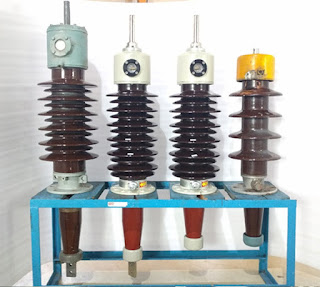Understanding High Voltage Bushings in Transformers: Functions, Types, and Importance
- Get link
- X
- Other Apps
In transformers, high voltage bushings are essential parts that guarantee reliable and secure electrical connections. This article explores their types, functions, and importance to the dependability and efficiency of transformers.
Functions of High Voltage Bushings
Insulation: The grounded transformer tank and the high-voltage conductor are crucially insulated by high-voltage bushings. This guarantees that the electricity travels through the intended path without leaking and prevents electrical problems.
Sealing: They serve as a seal to keep outside impurities like moisture and dirt out of the transformer and to stop the insulating oil or gas from leaking out. This keeps the transformer long-lasting and efficient.
Electrical Connection: The internal windings of the transformer can be safely and effectively connected to external power lines or equipment through the use of bushings. For electrical energy to be transferred, this connection is essential.
Types of High Voltage Bushings
Oil-Filled Bushings: These bushings, which are frequently utilized in high voltage applications, are filled with insulating oil. The oil has good insulating qualities and aids in cooling. When used in high voltage applications, these bushings are sturdy and dependable.
Resin-Bonded Paper (RBP) Bushings: These are created by impregnating paper with resin, which gives it excellent mechanical strength and insulation. Although they can be made for higher voltages, they are usually employed in medium voltage applications.
Resin-Impregnated Paper (RIP) Bushings: These bushings use paper that has been impregnated with resin for insulation, just like RBP. They are appropriate for a range of voltage levels, including high voltage applications, and provide superior resistance to moisture.
Ceramic Bushings: These bushings are extremely robust and resistant to harsh weather because they are made of ceramic materials. They are frequently employed in situations with extremely high voltages and temperatures.
Importance of High Voltage Bushings
Safety: Through the provision of essential insulation and the prevention of electrical problems, high voltage bushings guarantee safe operation. Bushings that are in good working order guard against hazardous situations like electrical arcing and short circuits.
Reliability: The state of a transformer's bushings has a big impact on how reliable it is. Properly maintained bushings minimize downtime and guarantee a steady power supply by lowering the likelihood of transformer failure.
Longevity: A transformer's total lifespan is influenced by its bushings. They contribute to maintaining the interior conditions of the transformer and extending its operational life by stopping leaks and keeping impurities out.
Efficiency: High-quality bushings offer effective electrical connections that minimize energy losses and raise the power system's overall efficiency. For electricity grids to operate sustainably and economically, this is essential.
Transformers cannot function safely, dependably, or efficiently without high voltage bushings. Comprehending the many types, functions, and significance of transformers aids in their correct maintenance and functioning, which in turn promotes a reliable and effective power supply system. To keep transformers from failing and to increase their longevity, bushings must be inspected and maintained on a regular basis.
- Get link
- X
- Other Apps
.jpg)
.png)


Comments
Post a Comment